There are many interesting stories behind how names of places in Seoul came to be. About 5km (3 miles) southeast of the City Hall, there is a neighborhood called 왕십리, Wangshimni.1 If you’ve been to Seoul, you might have heard of it or even gone through its subway station a few times.
All train/subway stations are marked in 4 languages—Korean, English, Chinese, and Japanese katakana. In Chinese, the neighborhood name is written as 往十里 (I’ll have to do a separate post on Chinese letters used in Korean language).
往 (왕, wang): to go, travel
十 (십, shihp): number 10
里 (리, ri): unit of distance, 1-ri is about 400 meters (~1300 feet)
Let’s go back to the year 1392. Goryeo dynasty is overthrown and 이성계 (Yi Sung-gye) founds Joseon. Yi (King Taejo) asks his close personal friend Buddhist Monk Moo-hak (무학) to find an auspicious place for a capital for his new nation. So, he sets on his journey down south from Gaeseong (개성, old capital of Goryeo and in North Korea today) and likes what he sees at this one particular place in Hanyang (한양, today’s Seoul).
As Moo-hak was enjoying the view of the land, the legend has it, a passer-by farmer says to his cow loudly, “hey, you cow, as dumb as Moo-hak, start walking.” Taken aback, Moo-hak turns to the farmer and asks, “is there a better location?” The farmer says, “go 10-ri (십리, 十里) northwest from here.”
That’s essentially where today’s city center lies, and from that time, the area of that chance meeting between Moo-hak and the farmer 600 years ago became known as 왕십리, Wangshimni. The legend also has it that the farmer was an apparition of Monk Doseon (도선), a feng-shui master from the 9th century.

Some of you may be aware that the Wangshimni subway station is one of the busiest and maze-like because it’s a transfer hub for 4 different Metro Lines. The construction of an additional line passing through here is due to be completed in 2026 and yet another one in a few years after that, totaling 6 lines stopping at the station. It is going to be a zoo.
There are many other such interesting backstories of neighborhood names. Today, we’ll take a closer look at two places that have foreign names.
One of the most expensive and sought-after business districts in all of Seoul Korea is this area in Gangnam, a strip of land on either side of this main boulevard from Gangnam subway station to Samseong/COEX station.
This is the prime real estate location for businesses—Samsung HQ, POSCO HQ (steel and construction, 5th biggest company in Korea), Hyundai Motors is building its HQ here, NC Software (gaming) used to be here. The World Trade Center is here as well, not to mention the famous COEX Mall.
That main street is called 테헤란로, Teheran-ro (Blvd, Ave, St, Rd… take your pick), named after the capital city of Iran.
Before the Iranian Revolution in 1979, the South Korean-Iranian relations were… (let’s just say) “friendlier” than it is now. In 1977, the mayors of Seoul and Tehran agreed to name a street in honor of each other’s city and thus this “Seoul Street” was born in Tehran. But sadly, the mayor of Tehran who signed the city sisterhood with Seoul was executed during the Iranian Revolution.
From what I understand, the Seoul Street in Tehran is still there but is a nondescript road in the northern part of Tehran.
Teheran-ro in Seoul in 1977 wasn’t the Teheran-ro of today. The yellow arrow in the picture below shows us where it begins. You see the rice paddies all round here.
That intersection of two main streets you see is where Gangnam Station is today.
For good measure, this is what COEX looked like when it first opened in 1979. This is where Teheran-ro ends.
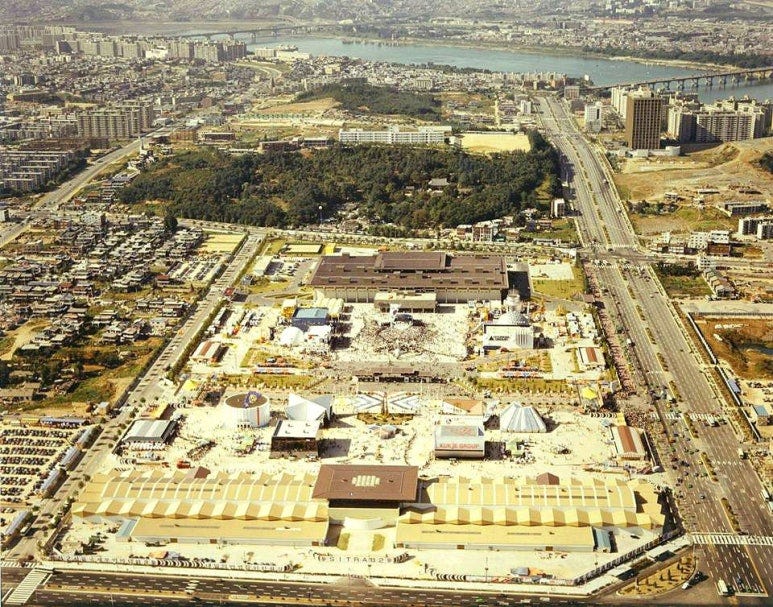
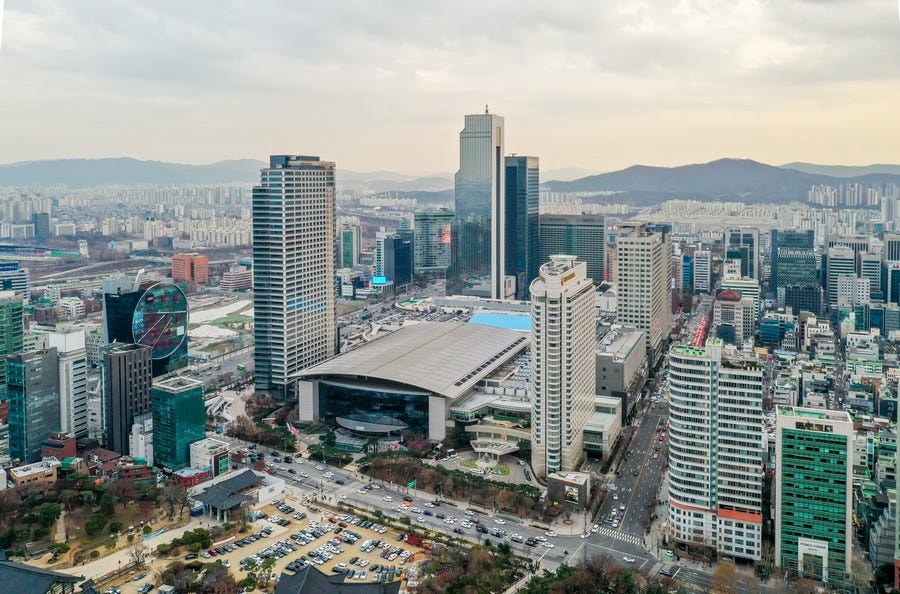
One of the oldest and most luxurious hotels in Seoul is simply known as 워커힐, Walkerhill. It sits on the eastern outskirts of Seoul overlooking the Han River as it flows into central Seoul.
When the Park Chung-hee administration learned of large groups of the US Armed Forces taking vacations in Japan in the early 1960s, the Korean CIA (중앙정보부, the predecessor to today’s NIS) built a hotel and casino to host American military families and foreign VIPs. Not without its own controversies when first built, the hotel2 has evolved into an emblem of luxury and prestige, and where many foreign dignitaries and VIPs stay whenever they’re in Seoul. It is one of the most expensive and exclusive hotel-resorts in all of Korea.
Spelled in one-word, the hotel, initially, and later the surrounding neighborhood and the main road leading to the hotel has come to be known as Walkerhill. It is named in honor of General Walton Walker, the commander of the US 8th Army during the Korean War.
When the Soviet-backed North Korea invaded SK without warning in June of 1950, the South Korean army was woefully undermanned and under-equipped. SK lost Seoul within 3 days of the war outbreak and the US-led United Nations came to a quick resolution, with 16 nations sending fighting units to SK, led of course by the United States Armed Forces. To which all S. Koreans are greatly indebted to, I have to add.

US troops (only 750) were sent in from Japan and immediately were engaged in battles, but again, badly outnumbered.
The red lines show the Korean forces (with a small US unit) having to retreat and redraw the defense line at the onset of the war, roughly in the first 2-month period. The important thing—maybe the most important—here to remember is that the US-SK army led by Gen. Walker was able to buy enough time and successfully defend what’s known as the “Busan Perimeter” or “Nakdong River Line” as the last bastion of South Korean territory (green area). Many military historians say this was pivotal in “saving” South Korea as a country.
Even if I die here, I will defend Korea until the end. - Gen. Walker in a speech in 1950 -
The famous amphibious Incheon Landing on September 10 of 1950 becomes a decisive turning point for the UN forces and SK to drive back the communists back up north. Had Gen. Walker’s defense of the southeastern corner failed, who knows what might have happened. But as fate would have it, he was killed in an automobile accident in December of the same year in Seoul and was interred at the Arlington National Cemetery.
Is naming a hotel/casino after Gen. Walker the best way to commemorate him? Perhaps not, but the truth of the matter is that all Koreans know the name “Walkerhill.” They may not know the man and the history, but still they do know the name. And maybe some Koreans will think of looking up the name Walker, as I did.
For those of you who can read Korean, the pronunciation of certain words sometimes isn’t how they’re written. It’s got something to do with what’s called 두음법칙 (Initial Sound Rule). You can look it up here.
owned by SK Group since 1973. SK is not “South Korea” but Sun-Kyong (선경, they’ve completed discarded the original Korean name), 2nd largest chaebol group by market capitalization. Heard of SK Telecom? That’s them, among others.

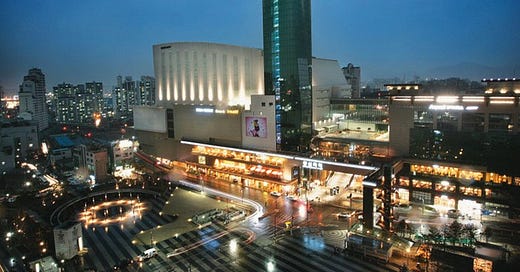




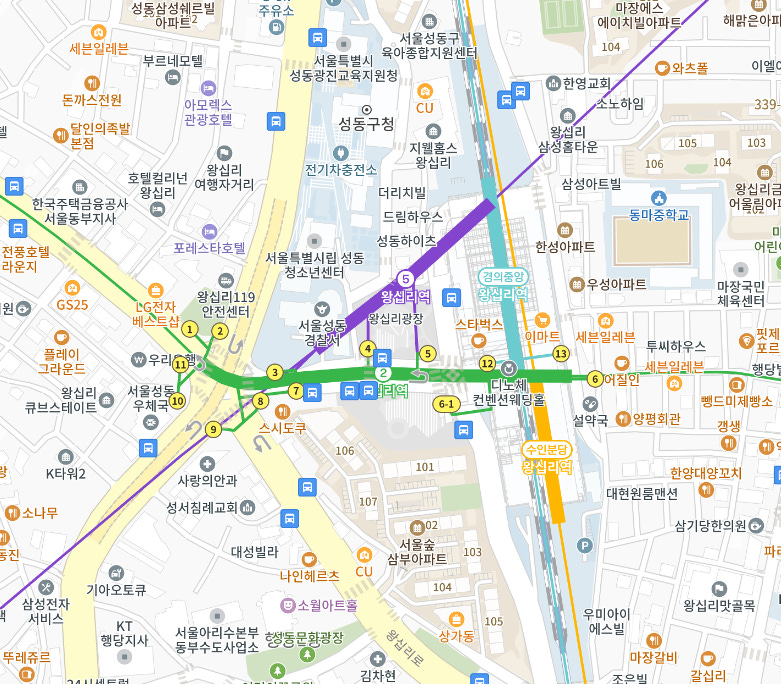



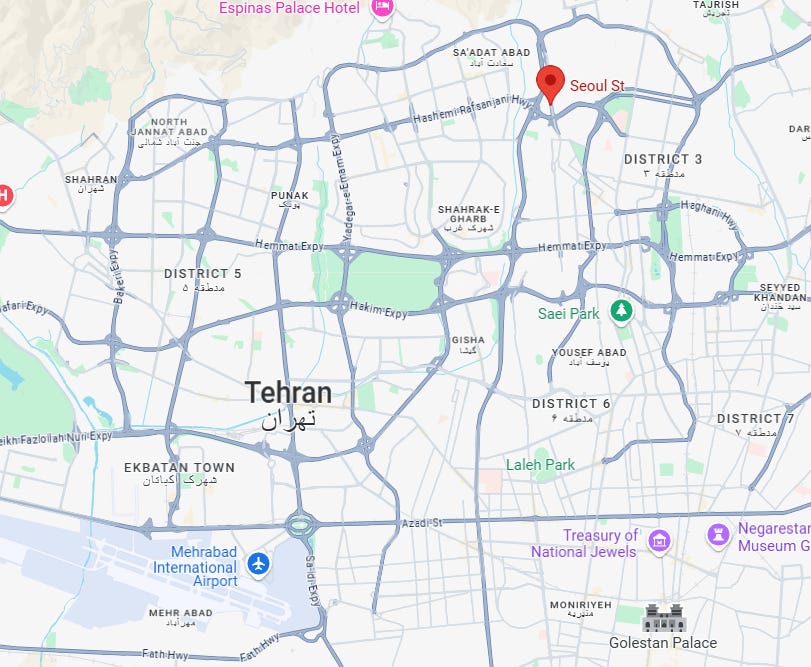



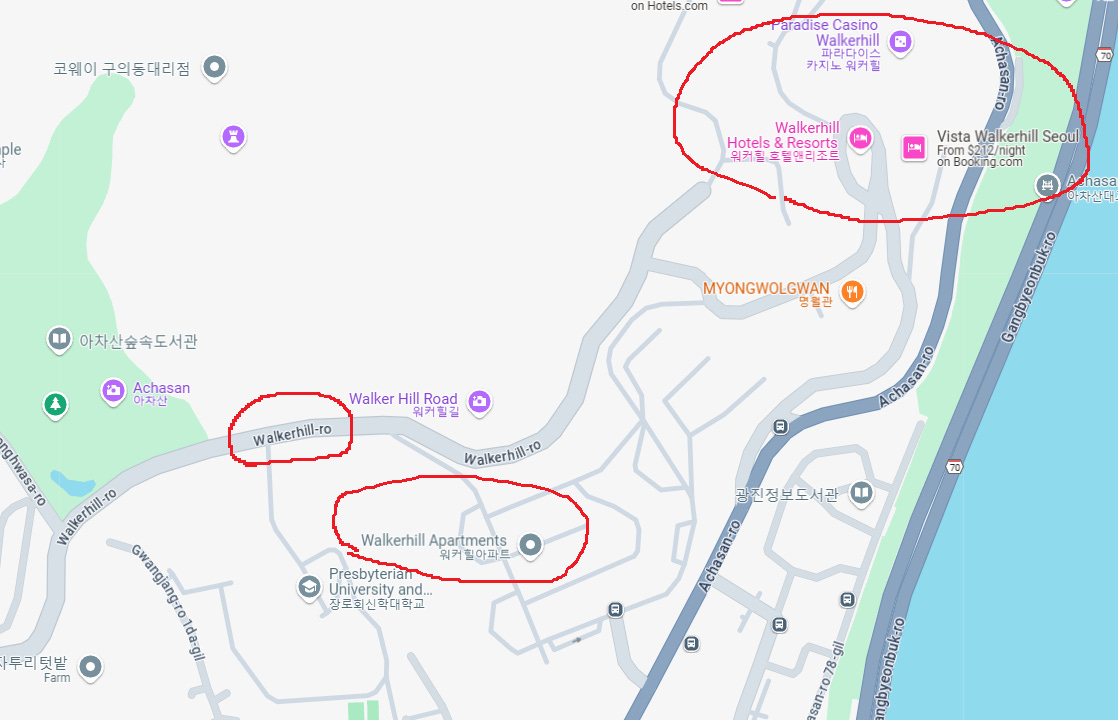
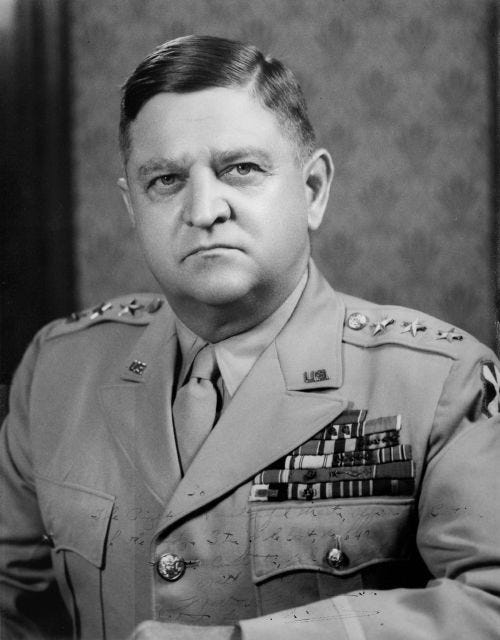

Shout out wangsimni ! Best neighborhood in Seoul !